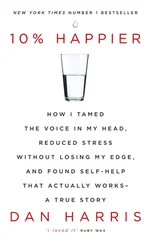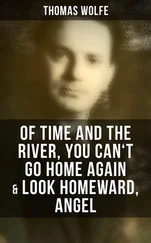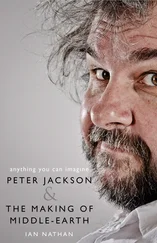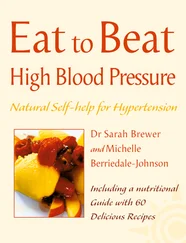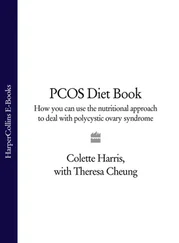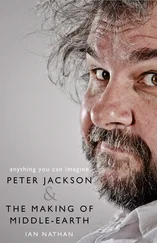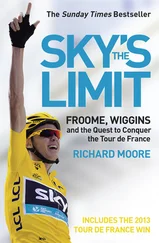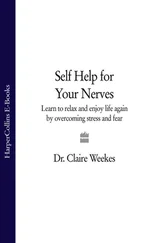In fact, my cancer did reappear in November 1975. By March 1976, my specialist thought that I would live for only two more weeks. My subsequent recovery ran the full gamut of available treatments and, in June 1978, I was declared free of active cancer.
Over the next few years, my former wife, Gail (who later changed her name to Gayle and then Grace), and I had four children. I began a new veterinary practice, took up a thirty-seven-acre farm, developed vegetable gardens and orchards, and built a new house.
In 1981, Grace and I initiated the Melbourne Cancer Support Group. This lifestyle-based support group was one of the very first of its kind anywhere in the world. It began with an initial urge to pass on the benefits of my own rather extraordinary experience of recovering against the odds. Having been through it all myself, I understood the problems cancer patients face. Furthermore, being a rather pragmatic veterinarian, I had enough medical knowledge to understand my own position at the outset, evaluate my progress, and assess critically the wide range of treatments considered. Fortunately, I was blessed with an open mind, so I was ready to consider anything that worked toward my aim. That aim was to create the right environment in which my body would heal itself. To think that the body can play a major part in healing itself was a novel approach way back in the mid-seventies, but is one that we now know to be full of possibilities.
When my cancer had recurred and the situation looked hopeless from the medical viewpoint, I remained confident that there was another way. Already I had been introduced to the idea that cancer involved a state of immune deficiency, a weakness in the body’s healing defense system. To explain: it is known that throughout the lifetime of every healthy person, cancerous cells develop in their body. This is a medically accepted fact. It also is accepted that the body normally recognizes these abnormal cells as a potential threat to its health and acts quickly to isolate and destroy them. It does so before any physical symptoms become apparent. However, in people who go on to develop cancer this does not happen and the growths continue unopposed. The body offers no resistance and symptoms of cancer are the result.
So I began with the attitude that it was possible to restimulate the body’s natural defenses—in particular, the immune system. This being so, it followed that the body itself could destroy and remove all traces of the cancer. As an extension, if the immune system remained intact and functioning properly, there should be no worry about the cancer reappearing. An exciting prospect!
That attitude was my starting point, my basic premise. All I did was directed toward that end. So, while I explored many avenues of treatment, every one was a part of the process of finding the right balance for me. Now more than thirty years later, and having worked with many thousands of people intent on dealing with their own cancer challenges, what this book is able to present are the key principles that will be helpful, as well as exploring some of the more peripheral options.
This attitude of being empowered and learning how to overcome the many challenges cancer can present is so very different to the fear that normally surrounds the word.
Fear and the Four Misconceptions of Cancer
Probably no other word strikes as much emotional fear in the community today as does cancer . While over the years the intensity of this fear may have lessened to some degree as more people have come to realize there is something constructive they can do in response to cancer, for most the fear is still very real.
When You Can Conquer Cancer was first published in 1984, it was regarded as somewhat provocative and revolutionary. First, there was the title, You Can Conquer Cancer. Conquer? Maybe “get help with,” maybe “manage,” maybe “live with” would have fitted the expectations of the day better. But “conquer” and “you can” in the same sentence? You can conquer cancer? Is that for real?
Actually the title was quite deliberately chosen to confront what many people believed back then and what some people still do believe: you get cancer and you die. This of course is the primary fear cancer engenders. But there is more to it. The fear of cancer is based on four basic misconceptions:
1.The cause of cancer is unknown.
2.Cancer is generally associated with pain and an untimely death.
3.There is nothing patients can do to help themselves except hand over responsibility for their well-being, and indeed their lives, to a doctor.
4.Treatments are unpleasant and probably will not work anyway.
It is the work of this book, of the Gawler Foundation and of other like-minded practitioners and groups to dispel these fears, to replace them with a positive attitude, and then to show how people can make a decisive contribution toward restoring their own health. Supporting the mind and body when undergoing treatment prescribed by a medical practitioner is a step we can all take.
Good News • Cancer Is a Process That Can Be Reversed
This book presents the good news on cancer. It is not a book about dying gracefully with cancer. It is about a process of living—living to the fullest.
The starting point is seeing cancer as a process. We must realize that most of the causes of cancer are now known and that cancer is not a chance happening of random fate. Once the causes are identified it becomes possible to plan appropriate action. To do this satisfactorily we need to expand our horizons. We need to consider the roles of those three aspects of our human condition that we know as physical, psychological and spiritual.
While personally I recognize the overriding importance of spiritual factors, I do not confuse these with religious issues. Religious preference is something different and personal to the individual, and therefore I talk little of this. Some prefer to leave religion alone, others take their religion seriously indeed, and it is my experience that whatever their choice, people explore that avenue for themselves. The techniques talked about in this book have no religious loadings, nor do they interfere or impose on patients’ preferences in any way. However, the majority of people do find the techniques an aid in their search for their own spiritual reality.
Most people, and people diagnosed with cancer in particular, are concerned with the basic questions: Who am I? Where did I come from? Where am I going? These fundamental spiritual questions are often prominent in the mind of someone diagnosed with cancer and are certainly worth exploring later in the book.
In these pages we shall consider also the role environmental and psychological factors play in the causation and treatment of cancer; for herein lies the key to success. We can identify the majority of the causes of cancer. I contend that there are techniques which provide effective antidotes to those causes. The techniques center on appropriate diet, exercise, positive thinking, stress management and meditation—all in conjunction with suitable specific therapies. By utilizing all these means, the body’s natural healing urge can be helped to reassert itself.
A body with properly functioning defenses cannot have cancer.
What Is Possible?
I have experienced the pleasure of working with other people who have been able to repeat the process I went through and become free of a supposedly terminal illness. But just as exciting and pleasing is the fact that these techniques have consistently produced a deeper love for life coupled with a profound acceptance of the outcome of that life.
So, while I have seen and continue to see many recoveries, I accept that not everyone is going to become free of their physical problems. Sadly, some may die of their illness. But it has been part of my joy to know that the great majority of those who used these same techniques and did not recover were able to die with great dignity, and a poise that often surprised and always impressed themselves and their families. In this way, too, cancer was truly conquered. So, although the aim is always first and foremost to help people back to full health, this approach is of great value to those who face dying.
Читать дальше

